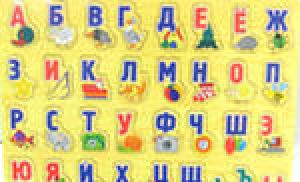How to make a poppy leaf from beads. Weaving red and Himalayan poppies in a master class
Bright, beautiful poppies made of beads are so similar to their living prototype. We offer you a simple lesson, as well as a video master class that will help you make a delightful flower with your own hands using beadwork. A bouquet of poppies can be supplemented with live spikelets and decorated dinner table

. Such an interesting floral composition will not go unnoticed. Necessary materials
- for weaving:
- beads: red, purple, green, yellow;
- green bead;
- wire for weaving red and green;
green threads.

Weaving the scarlet poppy will be carried out according to the following scheme:
. In total, the beaded poppy will contain four similar petals.
 Stamens To create stamens, in a 0.7 m section we make approximately fifteen stamens, having a length of about ten millimeters, twisting the wire under each of the beads yellow color
Stamens To create stamens, in a 0.7 m section we make approximately fifteen stamens, having a length of about ten millimeters, twisting the wire under each of the beads yellow color
each other (Figure 2 on the diagram). Each of the twists is placed one next to the other. For just one beaded poppy, make two bunches with stamens.
 Middle
Middle
The center of the poppy needs to be made on a 45 cm wire. We collect six pieces of the main material of the same shade and stretch the working tip through three of the first ones collected in the forward direction, thus forming a ring. Take and put the bead on both parts. After this, we distribute our stamen blanks around the bead. To the resulting middle, we attach four petals and twist a dense flagellum of about six centimeters under the base of the flower.
 On two pieces of 50 cm in length, we make two bud flaps from beads. On a red segment 0.4 m long, we make three centimeters of red beads low, form a loop from it, and then twist the ends under it.
On two pieces of 50 cm in length, we make two bud flaps from beads. On a red segment 0.4 m long, we make three centimeters of red beads low, form a loop from it, and then twist the ends under it.
We need to place the formed loop among the valves and twist a kind of stem about 6 cm.
Leaves
 Now, the master class moves on to the stage of weaving foliage. We use wire and beads for this. First, you need to make a small leaf. We string one bead. We fold the wire in half and string two more on both ends and move them towards the first. The next step is to collect two beads and thread them in the opposite direction through the first one. We form a similar process on the second part. Now, we collect one more for each of the wire parts and eight for both.
Now, the master class moves on to the stage of weaving foliage. We use wire and beads for this. First, you need to make a small leaf. We string one bead. We fold the wire in half and string two more on both ends and move them towards the first. The next step is to collect two beads and thread them in the opposite direction through the first one. We form a similar process on the second part. Now, we collect one more for each of the wire parts and eight for both.
We continue the master class on weaving poppy leaves from beads by stringing five beads. Through the bead, which is the penultimate one, we pass the wire in the opposite direction. Next, you need to collect the next three beads, and then stretch the wire through the first two of the collected ones. We make a branch of two beads, pick up another one and thread the segment through the first two in the branch. We continue weaving according to the diagram. The ends of the working material must be spread apart so that the beads located closer to the edge do not slide off. Thus, it is necessary to make two large leaves on 50 cm segments.
Assembly
 Our beaded poppy is almost ready, all that remains for the master class is to connect all the prepared parts together. To do this, to the stem formed from the collected poppy, we gradually attach the remaining elements: buds, leaves of small and large sizes. Twist the stem 2.5 cm and add the last leaf. We twist the stem, take the threads and begin to wrap the entire base with threads soaked in glue. Having made several of these flowers, you can assemble poppies from beads into a beautiful composition.
Our beaded poppy is almost ready, all that remains for the master class is to connect all the prepared parts together. To do this, to the stem formed from the collected poppy, we gradually attach the remaining elements: buds, leaves of small and large sizes. Twist the stem 2.5 cm and add the last leaf. We twist the stem, take the threads and begin to wrap the entire base with threads soaked in glue. Having made several of these flowers, you can assemble poppies from beads into a beautiful composition.
Another method showing poppy beading is discussed in step by step video a master class in which all the stages of creating a beautiful plant are demonstrated in detail.

My inspiration in this work was this beautiful flower!!! A beautiful sky blue color, so sophisticated, simple and at the same time incredibly beautiful poppy. I hope you enjoy my implementation and attempt to convey the Himalayan poppy using beads and wire.


Necessary materials for weaving poppies:
— 35 g. blue matte beads Matsono No. 10
— 40 g. dark green beads No. 10, matte from Matsono
— 5 g. yellow Matsono beads, matte No. 10
- wire green, blue, yellow 0.3 mm in diameter
— 2 light green faceted bicone made of Czech glass 8 mm
– 2 green beads 10 mm
- copper wire 1 mm
- green floral ribbon
- plaster
Weaving a poppy petal

1 . We cut off the blue wire about 60 cm, collect 35 blue beads, make a loop, next to the next loop of 37 beads and continue twisting the loops in the following sequence: 39, 41, 39, 37, 35 (Fig. 1-2).
2 . Now we collect about 18 beads and pass through the outermost bead of the nearest loop, tighten (Fig. 3-5). Next, we collect 3 beads and pass through the next bead at the end of the loop.

3. Picking up 3 beads at a time, move along the entire petal (Fig. 7-8). Again we collect about 18 beads, go down and wrap one end of the wire with the other (Fig. 9-10). One petal is ready. In total, you need to weave 10 exactly the same ones, 4 for two poppies and 1 petal for two buds.
Weaving the center of a poppy
1. We take 6 yellow beads, twist them into a loop and pass through the bicone, then I put on a bead to fix the wire on the other side of the bead and returned to hook a loop of six beads on the other side and thus it lay on the bicone in an even ring and became similar to a pestle.
2 . Next, cut a piece of wire about 60-70 cm and twist as many stamens as you can get. There should be a lot of stamens. Then wrap them around the pestle, making 2 or 3 turns. In this way, the middle should turn out with lush rows of stamens, like a Himalayan poppy.

3. Make another similar center. Next, attach 4 blue petals to them, placing them crosswise.
Weaving green leaves
1 . We cut the green wire about 45 cm and weave many leaves from dark green beads. I wove those leaves located in the middle of the stem a little smaller than those at the foot. Thus, for small leaves, collect 3 cm of beads, and for large leaves, 4 cm of beads.

2 . Next, continue weaving, guided by visual images using the French arching technique. In total, I got 6 small leaves, 3 for two of the three flowers, and 6 large leaves, 2 for each flower.

3 . We sew the leaf, weave it, cut off the unnecessary ends of the wire, tuck them in and your leaves are ready.
Weaving a poppy bud
The bud is woven very quickly and easily. To do this, simply weave 8 small petals. Connect the two together, insert a bead inside, additionally use wire to sew the bud from the top of the head and go through the bead inside, come out and twist all the ends of the wires. There are only two such buds in my work.

Now make two flower buds. To do this, twist one blue petal and insert it into a cup of two green leaves of the bud. Twist the ends of the wires together.
Assembling flowers
Now we take copper wire 1 mm in diameter, cut three pieces of 20 cm and 3 pieces of 12-13 cm. We wrap two blue poppy flowers and one bud onto the long pieces. Now wrap all the remaining buds onto the short pieces. Step back 10 cm from the flower and in this place fasten the bud to a shorter stem. Do the same with the rest of the flowers. Wrap the stems to the middle with floral tape, attach 3 leaves to two flowers and wrap the bottom of the stem with floral tape.

Planting poppies
I decided to make the pot myself, guided by Oksana Gladysheva’s excellent master class
As it turned out, making a flowerpot is not at all difficult, although this was my first experience and I was worried, it still worked out. Once the plaster was dry, I painted the outside with brown watercolor. Then I diluted more plaster to a thick sour cream, lined the bottom with paper and poured it in.

Literally in a couple of minutes you could already insert flowers into the plaster; hold the flowers a little and when you are sure that they are fixed, you can release them and wait until your work hardens. This usually happens when the plaster is already cold and white.
The decoration was an ordinary poppy, I glued it with PVA glue. To do this, simply apply glue thickly and sprinkle poppy seeds in an even layer. It would be nice to fix it all with varnish, but I don’t have it yet.


That's all, the poppies are ready. I hope you enjoy this work and inspire you to new creative achievements!!!
And a few more photos from different angles and different backgrounds so that you can more fully see the Himalayan poppies made of blue matte beads:



Many people may think that creating flowers from beads is quite difficult, especially for beginners. But in reality this is not so and therefore we present to your attention interesting master class on how to create poppies from beads, weaving patterns with step-by-step photo instructions.
In order to make such a flower you will need: red, green and black beads, beading wire.
Let's start with the fact that we need to make flower petals. In order to make one petal you need to cut about 80 cm of wire. Place 51 beads on it and make a loop, leaving one edge of the wire about 4-5 cm.


The resulting loop on top needs to be pressed.

You will need 5 such loops.



When the loops are ready long edge wire you need to string the same number of beads as on one side of the loop.

Then take the wire and thread it through the top bead of the first loop.

After this, place 2 beads on the wire and thread it into the top bead of the adjacent loop. Do this with all the loops.




Then you need to again thread the wire into the lower bead from the opposite side, tighten it slightly and twist it with the free end.


You will need six such petals.

Let's start making flower stamens. To do this, you need to prepare 60 cm of wire and put 13 beads on it.

Now we take the end of the wire and thread it through 12 beads, leaving the top one. Tighten the wire well. You need to make 9–14 such stamens.



You also need to make a poppy box for the middle of the poppy. It will require 65 cm of wire. Place 10 green beads on the wire and form a loop. In fact, the process of making a box is reminiscent of making petals.


We make six loops.

Now, accordingly, we carefully string green beads onto the long end of the wire, but take the last bead of black color and thread it through the top bead of the very first loop. After this, we put on two more black beads and thread them into the next loop. And we complete the design, just as we started.





To close the box you need to take the wire and thread it through the last row of beads on the other side, and then return it through the opposite row of beads and tighten it well.


We begin to collect poppies from beads. To do this, first connect the boll and stamens by twisting the wire well.

Let's take two petals, thread one into the other and twist the wire.

Then we screw the poppy box and the remaining petals.


It turned out so bright. We did something similar to this quite recently.

It can be screwed to a thick wire and placed in a vase. Or use it as a brooch. To do this, you need to trim off the excess wire, glue a felt base and a pin.

WEAVE A POPPY PETALE
1. Cut the blue wire about 60 cm, collect 35 blue beads, make a loop, next to the next loop of 37 beads and continue twisting the loops in the following sequence: 39, 41, 39, 37, 35 (Fig. 2, picture 1 and 2).
2. Now we collect about 18 beads and pass through the outermost bead of the nearest loop, tighten (Fig. 2, picture 3, 4 and 5). Next, we collect 3 beads and pass through the next bead at the end of the loop. 
3. Picking up 3 beads at a time, move along the entire petal (Fig. 3, pictures 7-8). Again we collect about 18 beads, go down and wrap one end of the wire with the other (Fig. 3, pictures 9-10). One petal is ready. In total, you need to weave 10 exactly the same ones, 4 for two poppies and 1 petal for two buds. 
WEAVING THE CENTER OF THE POPPY
1. We take 6 yellow beads, twist them into a loop and pass through the bicone, then I put on a bead to fix the wire on the other side of the bead and returned to hook the loop of six beads on the other side and thus it lay on the bicone in an even ring and became like a pestle. (Fig.4)
2. Next, cut a piece of wire about 60-70 cm and twist as many stamens as you can get. There should be a lot of stamens. Then wrap them around the pestle, making 2 or 3 turns. In this way, the middle should turn out with lush rows of stamens, like a Himalayan poppy. (Fig.4)
3. Make another similar center. Next, attach 4 blue petals to them, placing them crosswise. (Fig.4) 
WEAVING GREEN LEAF
1. Cut the green wire about 45 cm and weave many leaves from dark green beads. I wove those leaves located in the middle of the stem a little smaller than those at the foot. Thus, for small leaves, collect 3 cm of beads, and for large leaves, 4 cm of beads. (Fig.5) 
2. Next, continue weaving, guided by visual images using the French arching technique. In total, I got 6 small leaves, 3 for two of the three flowers, and 6 large leaves, 2 for each flower. (Fig.6) 
WEAVING A POPPY BUD
The bud is woven very quickly and easily. To do this, use simple French weaving to weave 8 small petals. Connect the two together, insert a bead inside, additionally use wire to sew the bud from the top of the head and go through the bead inside, come out and twist all the ends of the wires. There are only two such buds in my work. (Fig.7)
Now make two flower buds. To do this, twist one blue petal and insert it into a cup of two green leaves of the bud. Twist the ends of the wires together. 
ASSEMBLY OF FLOWERS
Now we take copper wire 1 mm in diameter, cut three pieces of 20 cm and 3 pieces of 12-13 cm. We wrap two blue poppy flowers and one bud onto the long pieces. Now wrap all the remaining buds onto the short pieces. Step back 10 cm from the flower and in this place fasten the bud to a shorter stem. Do the same with the rest of the flowers. Wrap the stems to the middle with floral tape, attach 3 leaves to two flowers and wrap the bottom of the stem with floral tape. (Fig.8) 
PLANTING POPPIES
Dilute the gypsum in a pot until it becomes thick sour cream, line the bottom with paper and pour in.
In just a couple of minutes you can insert flowers into the plaster, hold the flowers a little and when you are sure that they are fixed, you can release them and wait until your work hardens. This usually happens when the plaster is already cold and white. (Fig.9) 
Plaster can be decorated with poppies or any other decoration!
Beading is quite a fascinating activity. You can weave anything from beads - a flower, a keychain, a toy, and even a whole bag. Many beautiful colors are obtained by simply interweaving threads with beads. The beaded poppy looks very realistic.
Usually this flower is made using mosaic weaving. Moreover, each petal is separate. After all the petals are woven, they must be collected into one flower. A diagram of beaded poppies will be presented below. We will also consider step by step execution this flower.
Tools and materials
To make a poppy from beads, you will need some materials and tools. First of all, you need beads - two colors for the petal and one for the leaves. For petals, the colors most often used are red and black, but you can also find other options, for example purple poppy and even blue.

Well, for the leaves, of course, green. The only difference is in the shades, which can be darker or lighter. It's up to your taste. Also, bead weaving of poppies, the diagrams of which will be presented below, requires a fishing line or thread threaded into a bead needle. To make the stems, use wire, which is wrapped with green floss threads. In addition to everything listed above, don’t forget scissors, glue, and wire cutters. Also, prepare workplace. Take care of the lighting, since beading still puts a certain strain on the visual organ. Cover the surface you will be working on with a soft, light-colored cloth. It is best if it is monochromatic. Beads are clearly visible on such fabric, and they do not crumble during operation.
Which beads to choose
There are simply a huge number of bead manufacturers, but all their products are divided into only three categories. The first includes beads produced in Taiwan, China and in the vast expanses of our Motherland. Its quality leaves much to be desired. It is rough, brittle and has an uneven edge. But it is the cheapest, which means it is ideal for those who are picking up beads for the first time. The second category is Czech beads. Its quality is much higher, and the price has not yet reached sky-high levels. Weaving poppy seeds from beads using the mosaic technique is best done with this particular material option. If you use beads of the first category, you are unlikely to be able to achieve the desired petal shape. But, despite all its advantages, Czech beads still have a certain percentage of defects. However, compared to the previous one, it is very small. And finally, the beads of the third category are Japanese. These are the highest quality and most durable beads in the whole world. It is also the most expensive, which certainly affects the cost of products made from it. Most often used to create costume jewelry. You will not find curved edges or rough surfaces in Japanese beads. Even the hole for the needle is quite large.
Master class of poppies made of beads (main flower)
To create a poppy we use red and black beads. We begin work by collecting five red and six black beads on a fairly long thread (1 meter). This will be the center of the petal. From there we weave in one direction and then in the other, reducing the number of black beads in vertical rows from the center to the edges. Although you can weave from the bottom up, as shown in the diagram.

The main poppy flower has five petals. They all have exactly the same shape and size. To make the edge of the petal look beautiful and have smooth curves, braid it with additional beads in a circle. To keep the thread looking neat and not unraveling, make a knot and then pull it through the next five or six beads. Now just trim off the excess.
Flower assembly
Beaded poppies, photos of which are presented in this article, consist mainly of two rows.

The bottom row is represented by three petals sewn together, and the top row consists of two petals that are connected in two places. When you have assembled both rows, insert them one into the other and connect the bottom edges, sewing them neatly at the bottoms.
How to make the center of a flower
The middles of poppies perform different ways. Let's consider the simplest of them. Take a large green bead, pull a wire through it and twist the ends. Now take a very thin wire and cut as many lengths as the number of stamens you plan to place in your beaded poppy. Having placed a light yellow or light green bead on each piece, twist the free ends of the wire together. Gather the central bead and all the stamens around it into one “bouquet” and insert it into the center of the poppy.
Weaving buds
To imitate a half-opened poppy bud, you need to weave a petal and roll it into a tube, securing it with stitches. On the sides of such a bud there are small green leaves, which are made in parallel weaving on a wire. For one such leaf, take a piece of wire and first place one bead on it, move it to the center, collect two beads and pass through them with both edges of the wire. After this, put on three, four, six and four beads. Thread the wire through each row as described above. For a green bud that has not yet opened, you need to take three leaves. Each of them is woven in a parallel way. Rows are collected in the following sequence: three, four, five, six, seven, five, four, three and two beads. All these three leaves need to be sewn together to form a bud.
How to make leaves and flower stem
Poppy leaves can be woven in several ways. The simplest of them is parallel weaving on wire. They are created in the same way as small leaves for buds, but only bigger size. You can weave mosaic weaving from the middle of the leaf just like petals. Then you can make them more interesting by adding a jagged edge. The diagram shows another version of the sheet with a hole in the middle.

First, everything is done with mosaic weaving, and then the edges are connected to each other. If your flower should have a leg, you can make it from wire wrapped with green floss threads. When wrapping threads around the wire, at the end coat the edge of the thread with glue to secure it. To secure the buds to the stem, you first need to put a large bead on the piece of wire that is supposed to be the stem, place it in the middle, and wind the flower stem from the free edges. Then put a bud on the stem, which will be fixed thanks to the bead.
Application options
Poppy beads have a huge number of applications, primarily in creating various costume jewelry. You can decorate not only a necklace or bracelet with poppies, but even earrings and rings.

Poppies look very beautiful in a hairstyle. They wonderfully decorate all kinds of elastic bands, hairpins and headbands. You can also make a bouquet of poppies on stems and place them in a vase, or attach the flowers to a bag or clothing as a brooch.
We looked at how to weave a wonderful flower - a poppy - from beads. If you choose quality beads and follow the instructions carefully, you will be amazed at how realistic they look. With the help of such a flower you can easily decorate any outfit or accessory and enliven your image. You will also have a pleasant time creating it with your own hands.
 Petals
Petals 












